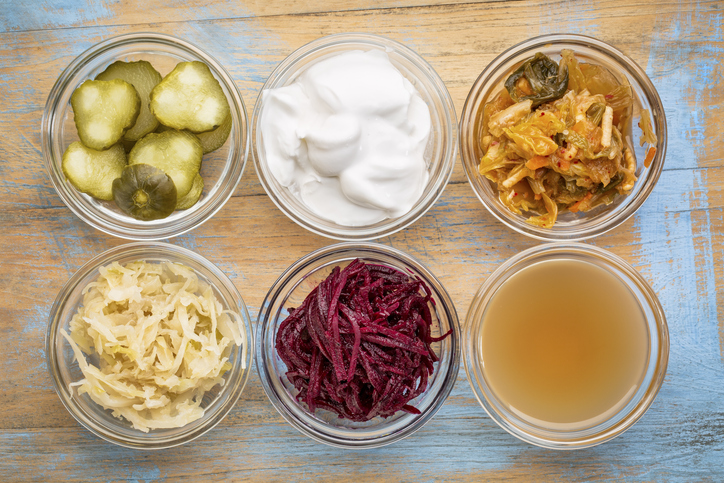
Probiotics and prebiotics have gained significant attention for improving gut health recently. You may have been wondering what the difference between probiotics and prebiotics is and if you should be taking them. Although probiotics and prebiotics are still being researched I would like to shed some light on the possible benefits they can have for your gut and overall health.
Probiotics
Probiotics are “the good bacteria” in your gut that help protect your gut from harmful bacteria. They are also referred to as the gut microbiota or gut flora.
Good sources of probiotics include kefir, Greek yogurt, kimchi, miso and sauerkraut. Some common names for probiotics are S. thermophilus, L. bulgaricus, L. acidophilus, Bifidus, L. casei and L. rhamnosus. They will be listed in the ingredients list of a food product and may also be referred to as “live and active cultures.”
A regular intake of probiotics “the good bacteria” can help improve digestion, keep bowel movements regular, prevent bloating, improve nutrient absorption, decrease inflammation in the body and boost the immune system. Probiotics also can potentially help with symptoms of irritable bowel syndrome (IBS) and other gastrointestinal disorders. Additionally, probiotics may help restore the gut and alleviate symptoms from taking antibiotics.
As of now, there is no daily recommendation for how much probiotics we need to consume each day.
Prebiotics
Prebiotics act as food for probiotics and are necessary for probiotics to be effective. Prebiotics and probiotics work together to break down short-chain fatty acids in the colon, which decreases inflammation in the body. This not only benefits gut health but also can benefit heart health, boost the immune system and even improve blood sugar control.
Prebiotics are found in fiber-rich foods that are not digested by the body. Some sources of prebiotics include bananas, asparagus, oats, almonds, apples, berries, onions, Jerusalem artichokes, garlic, flaxseeds and avocados. It is recommended to get 25-30g of fiber each day.
Eating a balanced diet with adequate fiber and including probiotic foods such as Greek yogurt is a great way to get all the healthy benefits that come with consuming prebiotics and probiotics. Check out the healthy recipes including probiotics and prebiotics below.
Recipes
Greek Yogurt Parfait (serves 1)
- 1 cup vanilla low-fat Greek yogurt
- ½ cup berries
- ¼ cup old-fashioned oats
- ¼ cup sliced almonds
Banana Nut Kefir Smoothie (serves 1)
- ½ cup vanilla nonfat kefir (probiotic)
- ½ cup almond milk or water
- ½ frozen banana
- ½ scoop vanilla protein powder
- 1 tablespoon almond or peanut butter
- 1 tablespoon ground flaxseed
- ½ teaspoon vanilla extract (optional)
- ¼ teaspoon cinnamon (optional)
Find more healthy eating tips from Northside's Nutrition Services.

